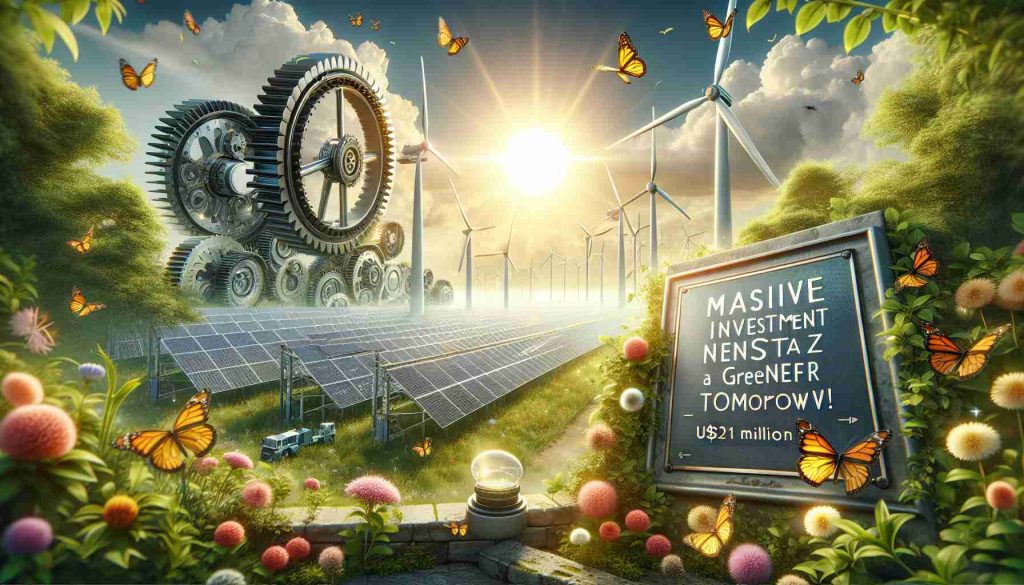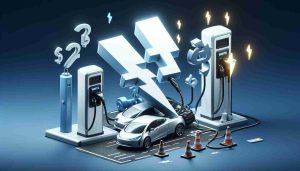Massive Investment for a Greener Tomorrow! US$231 Million for Clean Energy
5 min read
Significant Funding for Sustainable Utility Projects
In a groundbreaking initiative, the United States Department of Agriculture (USDA) has allocated an impressive US$231 million to a utility in New Mexico. This funding aims to bolster clean energy initiatives and enhance energy storage capabilities in the region.
The financial support will primarily focus on the development of advanced technologies that store energy effectively for up to 16 hours. This major investment is expected to facilitate a transition toward renewable energy sources, aligning with national goals for sustainability and reducing reliance on fossil fuels.
The USDA’s initiative is part of a broader strategy to modernize the nation’s energy infrastructure while promoting environmental stewardship. By investing in energy storage solutions, the utility can ensure consistent power availability, even when solar or wind generation is low. This reliability is crucial for supporting the growing demand for cleaner energy options across various sectors.
Officials involved in the project highlighted the potential impact of this funding on local communities. They anticipate significant job creation, economic development, and an overall positive influence on environmental health.
As the utility embarks on this ambitious endeavor, it marks a significant step forward in New Mexico’s commitment to achieving a sustainable energy future. This funding not only supports technological advancement but also sets a precedent for similar initiatives nationwide, illustrating the federal government’s dedication to fostering clean energy solutions.
Long-term Significance of Investment in Clean Energy Infrastructure
The USDA’s substantial funding for sustainable utility projects in New Mexico underscores a transformative trend in energy consumption that extends far beyond local implications. Investing heavily in renewable energy technologies not only aligns with domestic sustainability goals but also positions the U.S. as a leader in the global shift toward greener economies. As nations grapple with climate change and energy transitions, this initiative could serve as a model for similar projects worldwide.
The potential economic ramifications are considerable. By creating jobs in renewable energy sectors such as solar and wind, the investment fosters local economic growth while also addressing broader unemployment issues exacerbated by traditional industries. The expansion of energy storage technologies will play a pivotal role in stabilizing energy disruptions, with up to 16 hours of stored clean energy available as a cushion against intermittent power supply—a critical factor as demand surges in urban and developing areas.
Moreover, as utilities adopt advanced energy storage solutions, there will likely be significant declines in greenhouse gas emissions, with improvements in air quality benefiting public health. This national commitment to sustainability may ultimately influence consumer behavior, shifting public sentiment toward favoring sustainable practices and products.
Looking forward, future trends may include enhanced collaboration between public and private sectors. Alongside state and local governments, partnerships could emerge to further boost investments in revolutionary clean energy technologies. This reflects an awakening recognition of the interdependencies within our global economy and the urgent need for a concerted effort in the face of climate crises. The long-term implications are clear: as the U.S. bolsters its renewable energy infrastructure, it is not merely investing in technology, but carving out a more resilient and sustainable future for all.
U.S. Pushes the Envelope on Clean Energy: $231 Million Funding for New Mexico Utility
Significant Funding for Sustainable Utility Projects
In an unprecedented move towards enhancing clean energy infrastructure, the United States Department of Agriculture (USDA) has allocated a remarkable $231 million to a utility company in New Mexico. This funding is part of a concerted effort to accelerate the adoption of sustainable energy practices and bolster energy storage systems in the region.
# Key Features of the USDA Initiative
1. Energy Storage Technology: The funding will primarily support the development of advanced energy storage technologies capable of retaining energy for up to 16 hours. This innovation is critical as it helps to balance energy supply and demand, providing reliable power even when renewable sources like solar and wind are not generating electricity.
2. Transition to Renewable Energy: The investment aligns with national objectives aimed at reducing dependence on fossil fuels. By improving energy storage capabilities, the initiative seeks to facilitate a smoother transition towards more sustainable energy sources.
3. Community Impact: Local officials have emphasized the economic benefits of this initiative, which is expected to create numerous jobs and stimulate economic growth. Moreover, it is anticipated to positively affect environmental health through cleaner energy solutions.
# Pros and Cons of the Initiative
Pros:
– Enhances energy independence by facilitating renewable energy use.
– Creates job opportunities and boosts local economies.
– Supports environmental sustainability by reducing reliance on fossil fuels.
Cons:
– Large-scale funding may divert resources from other urgent infrastructure projects.
– There might be challenges related to technology adoption and integration into existing systems.
# Use Cases and Applications
The funding underscores the potential for innovative energy storage solutions in various use cases:
– Commercial Energy Storage: Businesses can store energy to manage peak demand and lower operating costs.
– Grid Stability: Utilities can utilize stored energy to maintain grid stability, thus improving overall system reliability.
– Electric Vehicle Charge Management: Energy storage can help manage the charging of electric vehicles, especially during peak times.
# Pricing and Market Analysis
While the total investment of $231 million is substantial, the costs associated with energy storage technology can vary widely based on the technology deployed and the specific application. Prices for energy storage systems are constantly evolving with advancements in technology, with the market projected to grow significantly in the coming years due to increased demand for renewable energy solutions.
# Trends and Innovations
There is a growing trend towards integrating artificial intelligence and advanced analytics in energy storage systems, which may enhance efficiency and operational reliability. Innovations such as solid-state batteries and other cutting-edge technologies are expected to emerge as key components in future energy storage solutions.
# Security and Sustainability Aspects
The USDA initiative not only aims to enhance energy storage capabilities but also addresses security concerns associated with reliance on traditional energy systems. By bolstering the resilience of energy infrastructure, the initiative can help protect against supply chain vulnerabilities and ensure a more sustainable approach to energy consumption.
# Predictions for the Future
Experts predict that this funding initiative could set a benchmark for future investments in clean energy technologies across the nation. As more utilities adopt similar strategies, there is the potential for significant advancements in energy resilience and sustainability, making a substantial impact on the way energy is produced and consumed in the U.S.
For further insights into sustainable energy projects and technologies, visit USDA.



